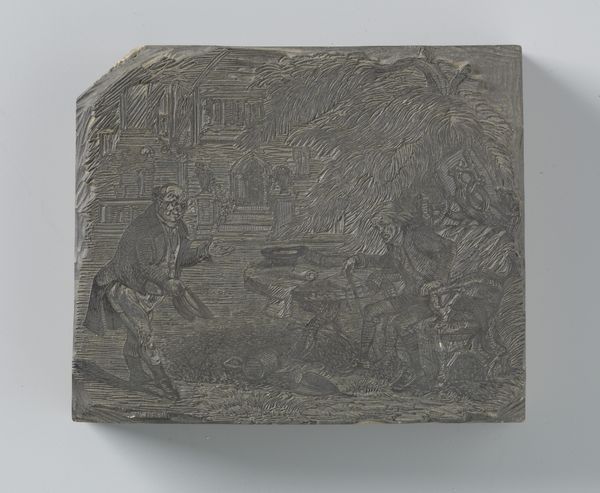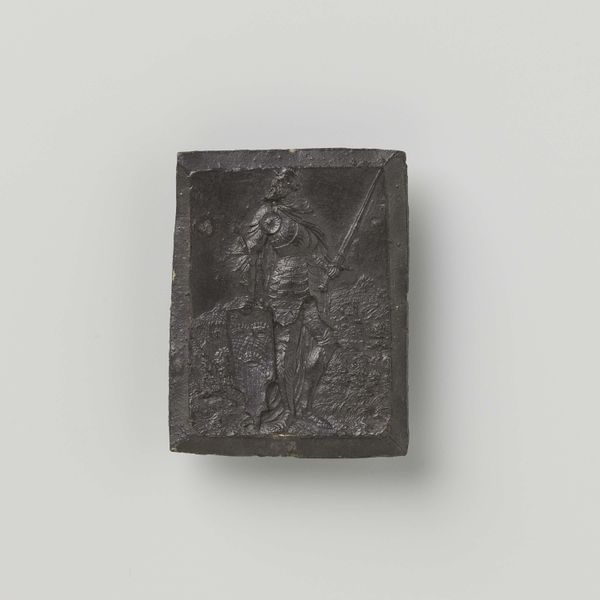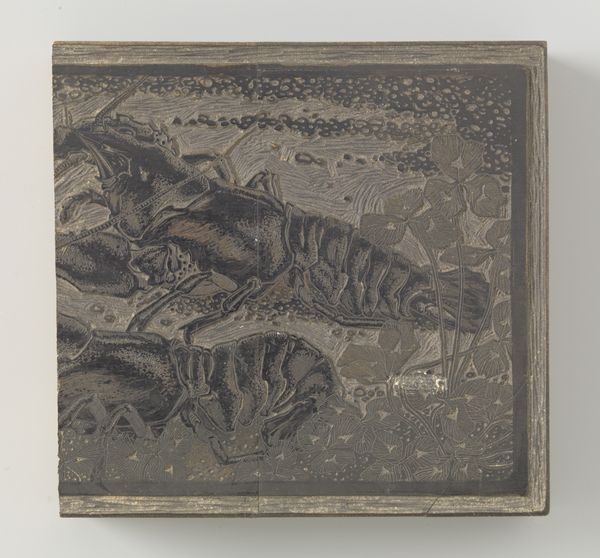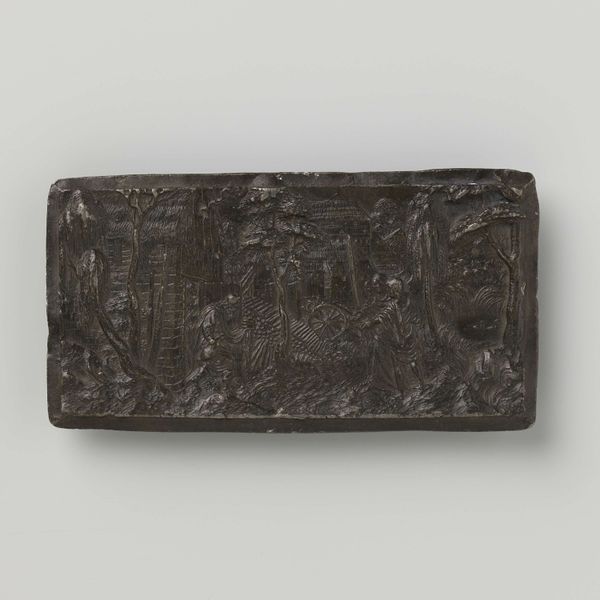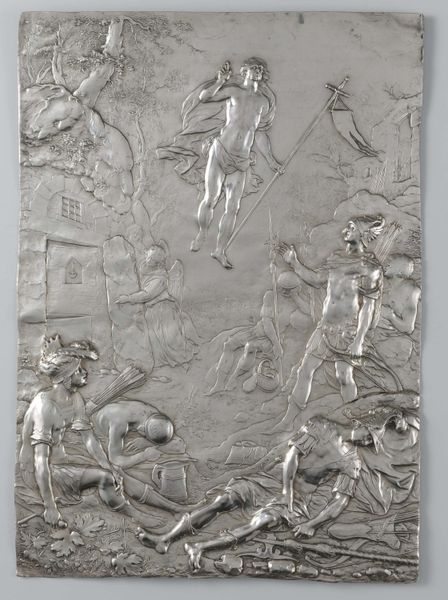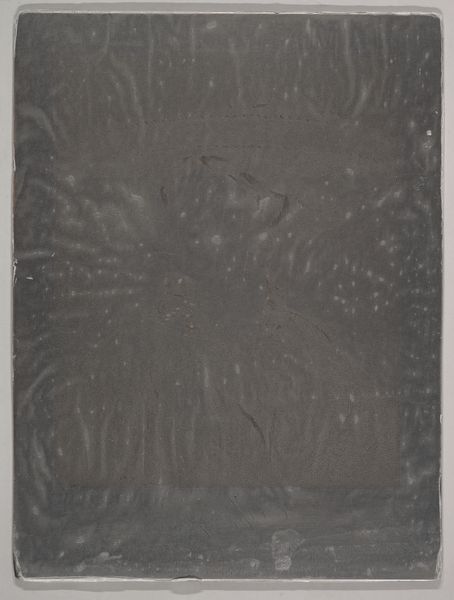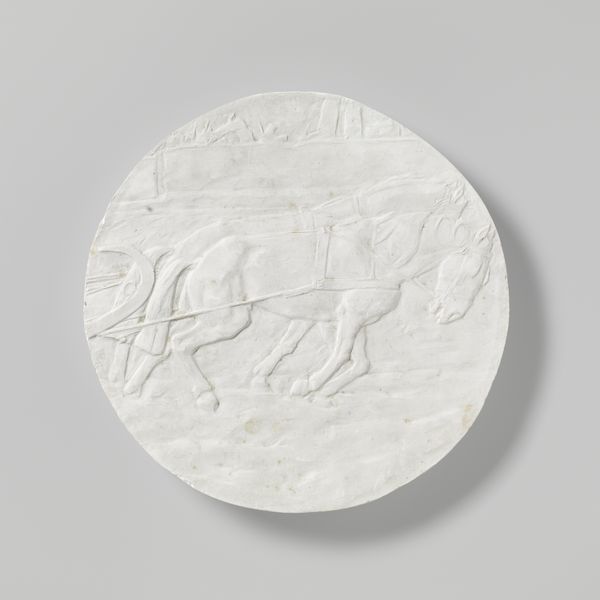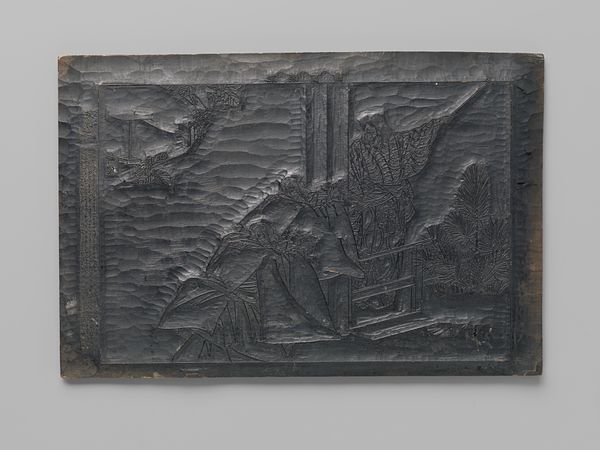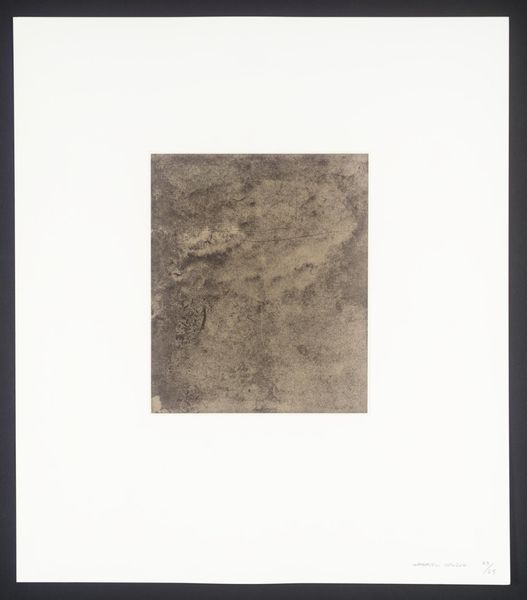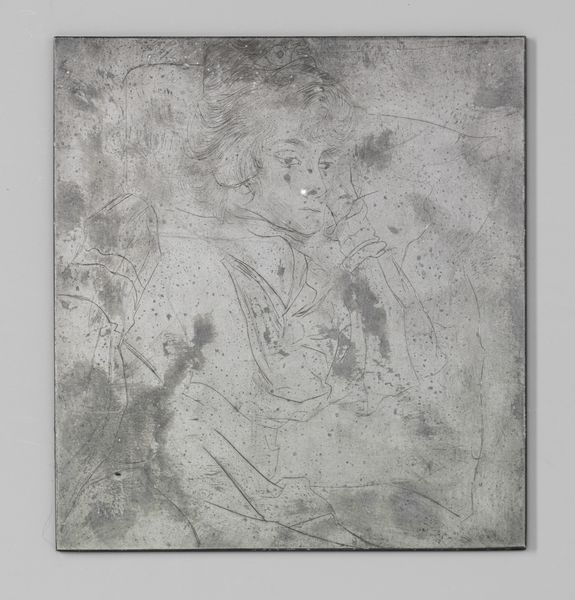
metal, relief, sculpture
#
narrative-art
#
metal
#
relief
#
landscape
#
mannerism
#
figuration
#
sculpture
#
history-painting
Dimensions: height 6.7 cm, width 9.2 cm, weight 57 gr
Copyright: Rijks Museum: Open Domain
Curator: Well, this little gem is a Mannerist metal relief, made sometime between 1525 and 1550 by Peter Flötner. It’s rather tantalizingly titled "Het Gevoel"—"The Feeling." Editor: Immediately I see a claustrophobic garden teeming with detail— almost overwhelmingly so! And everything is this very dark, somber metal hue. Is it supposed to feel a bit ominous? Curator: It's got that characteristic Mannerist density, doesn’t it? Flötner was playing with depth and perspective in a way that pulls you in and, yes, maybe leaves you feeling a little uneasy. The subject matter, some art historians think it presents a somewhat obscure historical painting, possibly related to mythology... The artist is intentionally playing with conventions here. Editor: Interesting! So it's not just trying to replicate a classical scene realistically? Because the figures look pretty dramatic and emotional! Are they even classical? Curator: Exactly! And while the material, metal, might seem cold, I think he’s pushing for a very sensory experience here, an interior landscape reflecting feeling—as the title suggests. Think of the political climate at the time as context. Art during periods of social upheaval often acts as a commentary and provocation of accepted tastes or historical record. Editor: I suppose it speaks to the enduring power of materials – this hard, unforgiving metal, communicating so much psychological nuance. Looking again, I am stuck by the little Cupid. I want to suggest his bow, while adding to the dense emotional landscape, is very different from earlier Cupid's arrows. A sense of doubt enters the emotion! Curator: I appreciate the artist leaving space for interpretation rather than delivering answers. Peter Flötner manages to create not just an art piece, but an historical discussion on what constitutes art during a given time. The artist does not create a mirror for society, instead his works provoke thought and critique in ways his audience are ready for. Editor: It’s the density of the relief carving combined with the suggestive symbolism, isn’t it? Leaving a lingering, enigmatic feeling, not unlike its namesake. Curator: Absolutely. The ability to stir so many feelings and interpretations makes Flötner's choices nothing short of impressive. Editor: Makes you ponder how well “feelings” have ever been documented! Thank you.
Comments
No comments
Be the first to comment and join the conversation on the ultimate creative platform.

